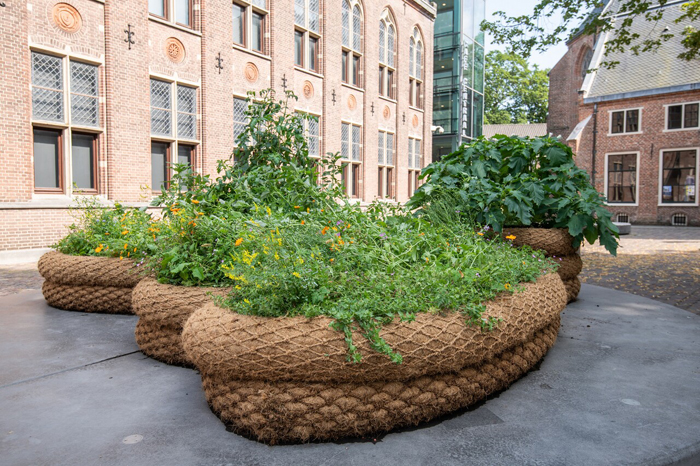
The Botanical Revolution
Centraal Museum, Utrecht(The Netherlands)
11.09.2021 - 01.05.2022

Press Release
Saturday, September 11 will mark the opening of The Botanical Revolution: On the Necessity of Art and Gardening at Centraal Museum Utrecht. In this exhibition, contemporary artists reflect on the significance of gardens. What do gardens tell us about the times we live in? In addition to contemporary artworks by Maria Thereza Alves, Sara Sejin Chang, Jeremy Deller, Stan Douglas, Ian Hamilton Finlay, Lungiswa Gqunta, Kerry James Marshall, Patricia Kaersenhout, Jennifer Tee, Henk Wildschut and others, the exhibition will feature unique loaned pieces by modern and older artists such as Albrecht Dürer, Vincent van Gogh, Maria Sibylla Merian and Tetsumi Kudo. These modern and old pieces reveal how deeply rooted the image is of the garden as a mirror of society.
Maria Theresa Alvez, Seeds of change. Photo: Centraal Museum Utrecht. © Robert Oosterbroek.

Gardens are places we associate with peace and solitude, places where the cycle of life – growth, blossoming and decay – unfolds. But gardens also reflect society. The way we control and manage nature, for example, is a clear sign of the times: do we pave our garden, or choose greenery? Do we fence our garden off, or leave it open? The way nature is shaped in gardens reveals something about prevailing and possibly changing conceptions in society. After all, gardens are also places of societal privilege, and the flowers and plants found there tell us something about migration and (colonial) history.
Global warming and the COVID-
The garden as a metaphor for our relationship with nature
The exhibition’s subtitle derives from Gerrit Komrij’s essay “Over de noodzaak van tuinieren,” or “On the Necessity of Gardening” (1990), in which he describes how the perception of gardens throughout history has always been closely entwined with how people view the world. In Komrij’s view, the garden is a metaphor for our relationship with nature. The world has changed radically since Komrij wrote his text in 1990, however. The time in which we live is characterised by the utter domination of nature by mankind, leading some to refer to it as the Anthropocene. We are exhausting nature in irreversible ways, with climate change as a result.
The artists in The Botanical Revolution invite visitors to reflect on nature in gardens, where that nature comes from, and how we can view and treat nature differently.
On the Necessity of Gardening: An ABC on Art, Botany and Cultivation
In addition to a hall booklet, a richly illustrated publication will be published in collaboration with Valiz. In this abecedarium, the cultural-
Is it possible to be a revolutionary and like flowers?
Laurie Cluitmans, curator of contemporary art at the Centraal Museum and responsible for The Botanical Revolution, is involved in the compilation of Is it possible to be a revolutionary and like flowers? , together with Heske ten Cate, artistic director Nest and Eva Burgering, assistant curator at the Centraal Museum. This exhibition can be seen parallel to The Botanical Revolution in art space Nest in The Hague. The artists who come together at Nest in the exhibition of the same name answer that question with a resounding 'yes!' They each start from their own perspective, but find each other in feminist affinities, queer desires and ecological solidarity.
With work by Mehraneh Atashi, Rossella Biscotti, Milena Bonilla, Anne Geene, Philipp Gufler, Gluklya, Camille Henrot, Patricia Kaersenhout, Otobong Nkanga, Ruchama Noorda, Maria Pask, CPR (Charlotte Rooijackers) and Lily van der Stokker.

© ArtCatalyse International / Marika Prévosto 2021. All Rights Reserved
Project September 11, 2021–May 01, 2022. Centraal Museum, Agnietenstraat 1 -